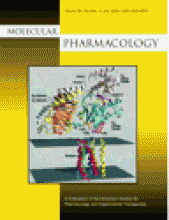Abstract
Tumor necrosis factor-α (TNFα) stimulates the expression of intercellular adhesion molecule-1 (ICAM-1) by activating the transcription factor nuclear factor-κB (NF-κB) in human airway smooth muscle (ASM) cells. This study characterizes the receptor involved as well as critical downstream signaling events mediating cytokine-induced NF-κB activation and ICAM-1 expression. TNFα stimulation for 1 to 4 h induced ICAM-1 expression in human ASM cells. This rapid TNFα-induced ICAM-1 expression enhanced T-lymphocyte adhesion to ASM cells, which was inhibited by anti-ICAM-1 antibodies. Using immunostaining, we demonstrated that TNFα receptors TNFR1 and TNFR2 are expressed on native human tracheal smooth muscle. Treatment of cells with htr-9, an antibody that specifically activates TNFR1, also stimulated expression of ICAM-1 mRNA and protein. Utr-1, a blocking antibody to TNFR2, did not affect TNFα-mediated ICAM-1 expression. Both TNFα and htr-9 increased luciferase activity in ASM cells transfected with a NF-κB reporter plasmid. Overexpression of a dominant negative TNF receptor-associated factor 2 construct, lacking the NH2-terminal RING finger, completely abrogated both TNFα- and htr-9-mediated increases in NF-κB reporter activity. Thapsigargin, an agent that depletes intracellular calcium stores, abrogated both cytokine-mediated NF-κB-dependent ICAM-1 mRNA transcription and protein expression but had no effect on IκB degradation. In addition, chelating cytosolic calcium with 1,2-bis(2-aminophenoxy)ethane-N,N,N′,N′-tetraacetic acid acetoxymethyl ester also inhibited cytokine TNFα-induced ICAM-1 expression. These data suggest that TNFR1, through a TNF receptor-associated factor 2-NF-κB signaling pathway, mediates TNFα-induced expression of ICAM-1 on ASM cells by involving a thapsigargin-sensitive signaling pathway.
Footnotes
- Received December 29, 1999.
- Accepted March 28, 2000.
-
Dr. Yassine Amrani, University of Pennsylvania Medical Center, Pulmonary, Allergy and Critical Care Division, 848 Biomedical Research Building II/III, 421 Curie Blvd., Philadelphia, PA 19104-6160. E-mail: amrani{at}mail.med.upenn.edu
-
This study was supported by Grants HL03202 (to A.L.L.), McCabe Research Fund of the University of Pennsylvania (to A.L.L.), HL55301 (to R.A.P.), AI40203 (to R.A.P.), American Lung Association Career Investigator Award (to R.A.P.), and HL64063 (to R.A.P.).
- The American Society for Pharmacology and Experimental Therapeutics
MolPharm articles become freely available 12 months after publication, and remain freely available for 5 years.Non-open access articles that fall outside this five year window are available only to institutional subscribers and current ASPET members, or through the article purchase feature at the bottom of the page.
|






